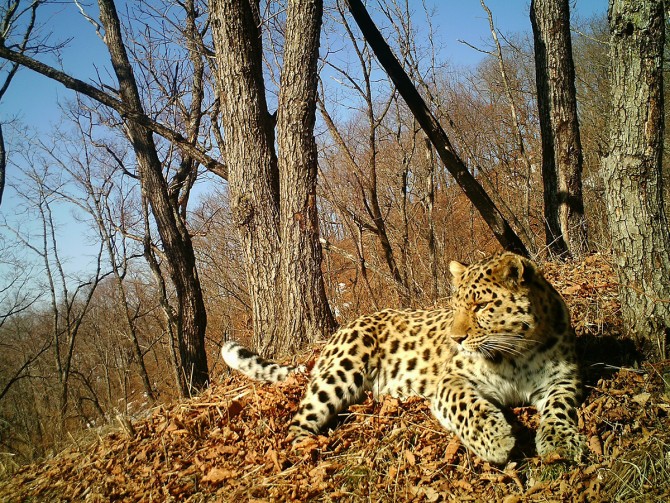Critically endangered Amur leopard faces new threat
By Melanie Greaver Cordova
A paper in the Journal of Wildlife Diseases describes the first documented case of canine distemper virus in a wild Amur leopard, after a two-year-old female was found on the side of the road exhibiting severe neurological symptoms.
Amur leopards are critically endangered, with only 80 estimated left in the wild. Most of the population lives in Land of the Leopard Park in eastern Russia, where the two-year-old female was found in 2015.
“As carnivore numbers decline, they face a greater risk from chance events like outbreaks of disease,” said Martin Gilbert, a Wildlife Health Cornell carnivore specialist at the Cornell University College of Veterinary Medicine and joint lead author on the paper.
Canine distemper virus (CDV) is well known in domestic dogs. It infects the respiratory system, causes intestinal problems and, in some cases, will progress to severe neurological issues like increased tactile sensitivity, convulsions and seizures. The fatality rate is high but varies depending on the species, and survivors often have painful lifelong side effects.
The leopard from the study likely contracted the virus from nearby domestic dogs or wild carnivores, such as foxes or raccoon dogs, as there are too few leopards left to maintain the circulation of CDV themselves, write Gilbert and his co-authors. Infections are known to spread quickly among social species like lions, with an outbreak in 1994 linked to the death of more than 1,000 lions in Serengeti National Park in Tanzania. Although the virus may spread more slowly between solitary species like leopards, modeling has shown that even low rates of transmission greatly increase the likelihood of extinction of the ecologically similar Amur tiger.
“With such a limited breeding population, even a small number of deaths from disease can be the difference between the survival of a population or extinction,” said Gilbert.
The Amur leopard already faces habitat loss and prey depletion. The paper suggests that the most effective way to combat CDV is to employ traditional conservation approaches like protecting their habitat, establishing additional populations elsewhere and reducing hunting of the big cats in general. In the future, as Gilbert and his colleagues learn more about the ecology of CDV, they intend to address whether approaches like vaccination may also play a role.
Gilbert conducted this research with the Wildlife Conservation Society, which is based at the Bronx Zoo, and Land of the Leopard National Park, a 650,000-acre national park in Primorskii Krai, Russia, that accounts for approximately 70 percent of the big cat’s natural habitat. The Amur tiger, lynx and leopard cat also live there.
The paper is titled, “Canine distemper virus in a wild Far Eastern leopard (Panthera pardus orientalis).
Melanie Greaver Cordova is a staff writer for the College of Veterinary Medicine.
Media Contact
Get Cornell news delivered right to your inbox.
Subscribe

